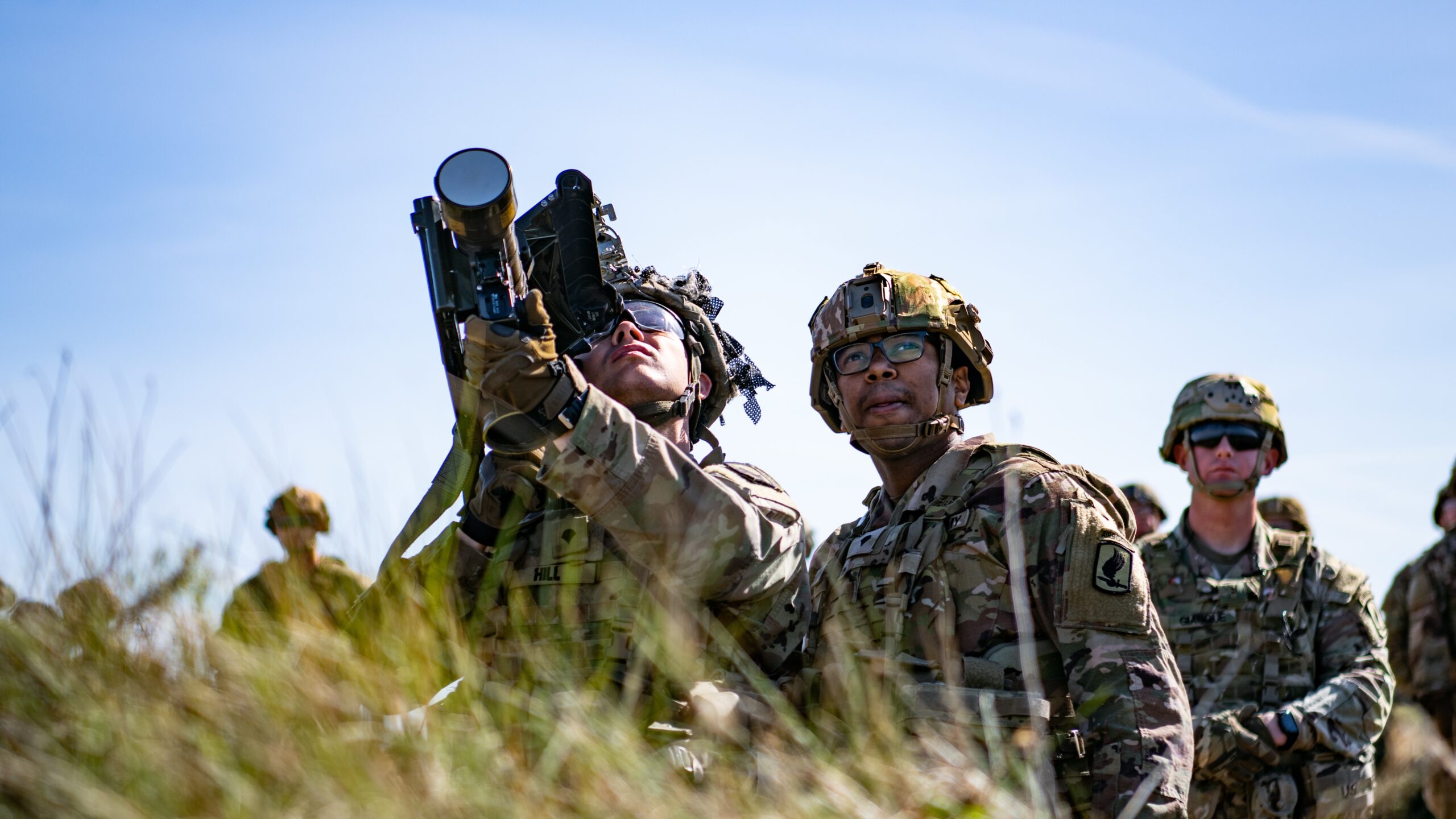
U.S. Army paratroopers assigned to the 173rd Airborne Brigade practice acquiring a target with a FIM-92 Stinger during an air defense live-fire exercise alongside soldiers with the Croatian Air Defense Regiment. This training is part of Exercise Shield 22 at Kamenjak near Medulin, Croatia on April 8, 2022. (U.S. Army photo by Staff Sgt. John Yountz)
I/ITSEC 2022 — Russia’s invasion of Ukraine has highlighted to US forces in Europe the importance of “threat-informed” exercises with allies, according to a top European Command official.
Speaking Wednesday on a panel about deterring Russian aggression here at the I/ITSEC 2022 conference, Maj. Gen. Jessica Meyeraan, EUCOM’s director of exercises assessments, said an “interesting development that occurred over the course of the last 12 to 24 months in the NATO parlance is an acknowledgment that we need to focus on a real-world threat.
“And what I mean by that is there, for very important and for political reasons, there had been a practice, or still is, [that] we need to reassure political leaders within NATO that [exercises are] appropriate, safe to do and they need to give [their] blessing in order to do it,” she said. “But on the military side, there’s an acknowledgment that… if we’re going to be plans-based as we align our exercises, we need to be threat-informed as well, which is a very important, very powerful development that is going on right now.”
Meyeraan said there are about 150 exercise-related activities that occur in a single day in EUCOM, with 15 to 20 exercises focused on training the joint full force and keeping a globally integrated perspective. She also pointed to a joint exercise program funded by the Joint Staff J6, which is responsible for command, control, communications and computers/cyber requirements.
“In the odd years, it’s to the tune of about $80 million and in the even years it’s about $120 million, so it’s a good amount of money, and through that funding we’re able to bring exercises into that portfolio and use some of that joint funding to offset some of the expenses that the components may be struggling with in order to execute these exercise objectives,” Meyeraan said.
She added that three fiscal 2023 NATO exercises were brought into the joint exercise program and centered around command and control and computer-related exercise activities. The joint exercise program enables the J6 community to take Joint All Domain Command and Control (JADC2) lines of effort and “create” specific EUCOM lines of effort that allows the US to collaborate and communicate with allies and partners.
The Pentagon’s JADC2 lines of effort include data enterprise, human enterprise, technology enterprise, integrating with nuclear command and control, and modernizing mission partner information sharing.
That last line of effort is something the J6 is focusing on right now, creating a NATO-focused mission partner environment that enables information-sharing across the alliance via a “persistent information domain” connecting EUCOM and NATO commands and NATO and allied partner nations in order to share data, Meyeraan said. But more work needs to be done.
“Is it where we need to be? No, but it’s certainly very powerful, very positive first steps in this journey to create this environment,” she said.






















